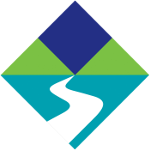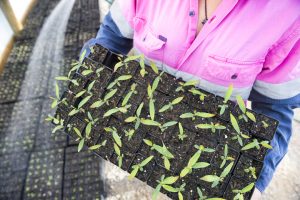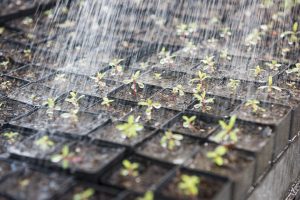The East Gippsland Catchment Management Authority (EGCMA) has been working together with DELWP and the Moogji Aboriginal Council to undertake weed control on the Deddick, Bonang and Brodribb Rivers.
Community members in Tubbut, Goongerah and Bonang have identified emerging high priority weeds along the local waterways which would quickly spread downstream if left untreated.
The partners have controlled Inkweed on the Brodribb around Goongerah and English Holly below the Bonang Township. The removal of Privet around Tubbut compliments previous works by DELWP to improve river health.
“It’s important to work together with our partners to achieve the best results for our waterways, from top to bottom,” said Chris Anderson, Project Officer with DELWP.
“Controlling weeds on our waterways is a significant part of the Authority’s works program”, said Graeme Dear, CEO of the EGCMA. “This project supports the State Governments Water Plan for Victoria seeking to improve the health of waterways and catchments throughout the state.
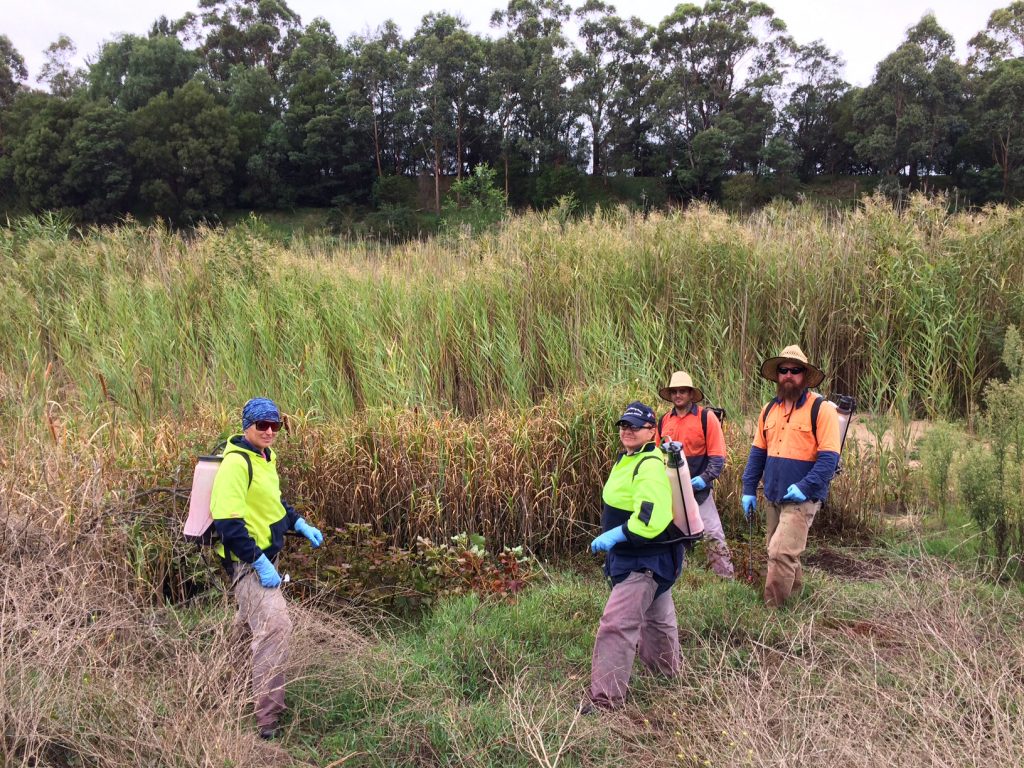
The lower Snowy River work is continuing this year with an ongoing partnership between the East Gippsland Catchment Management Authority (EGCMA) and Moogji Aboriginal Council.
The Moogji works crew have been working on the river for over a decade and look after the area from Jarrahmond to the Brodribb. The crew controls weeds and plants native seedlings to improve the health of the Snowy.
“Moogji are a terrific partner providing opportunities for local people to develop a career path and further employment opportunities while improving the health of the river.” said EGCMA CEO, Graeme Dear.
This aligns with the objectives of the Water Plan for Victoria which seeks greater involvement of indigenous people in waterway management.
“The river is back to where it was when I was a child. I can’t remember it looking as healthy as it is at the moment since I was a young bloke.”
So says Daryl Cameron, a cattle farmer from Noorinbee who grew up on the farm that he and his brother Greg now run.
Back when Daryl was a kid he remembers the river being filled with fallen branches, lots of trees on the banks and plenty of little islands in the middle of the river. “You could get across in your boots without getting your feet wet” he says. Suffice to say that Daryl’s seen a lot of changes on the floodplain over the years.
The Cann River valley is well known for its floods. The area has always been prone to flooding but these days locals tend to refer to just three – ’71, ’78 and ’98, with 1971 being the biggest in living memory.
The ‘71 flood stunned the local farmers, with barely a fence left standing in the valley once the waters had subsided. “The 1971 flood tore the guts out of it” explained Daryl. “I woke up to discover our paddocks were four foot under water and I thought, gee I’ve blown my farming apprenticeship here! I remember there was a pressure wave 15-20 foot high throwing out huge trees over the wave, the force was just unbelievable.”
“Historically, authorities thought they were doing the right thing by deepening and widening the river, straightening it up.” concurs Greg, “but the consequences they weren’t able to predict when that ‘71 flood came was that it just moved so much of the alluvial plain into the river. That’s been the big battle since then.”
The Camerons have been working in partnership with the East Gippsland Catchment Management Authority and its predecessor, the Cann River Improvement Trust, to minimise the impacts of future flood events and improve the health of the river. An important key has been fencing to keep stock off the river and giving native vegetation the chance to regenerate along the river’s banks.
“Getting the river choked up again and trying to slow it down is pretty important to stabilise the riverbed. It’s a simple principle but hard to do and we wouldn’t have had a hope in hell on our own” says Greg.
Revegetating the banks has encouraged reed beds to form and over time longer and deeper pools of water have begun to re-establish. “It’s more systemic of what it would have been like before all of the land clearing so I’d say that it’s very positive. You certainly see the little Galaxia fish in the deeper pools, they were always there when we were kids but they all disappeared after ‘71 of course.”
The whole community is celebrating the return of a platypus on a neighbor’s property upstream explains Daryl, “I haven’t heard of a platypus in the valley for pretty much my whole adult life. It’s very encouraging to know they’re recolonising.”
Both brothers agree on the importance of a healthy river. “It’s the life blood of the valley” says Daryl. “There’ll always be things to manage but it’s the reason we’re all here; we farm and live on a floodplain and so it’s important to have that river as pristine as it can be.”
The Cann River is one of ten flagship waterway projects currently underway across the state as part of a commitment by the Victorian Government under the Water Plan for Victoria.
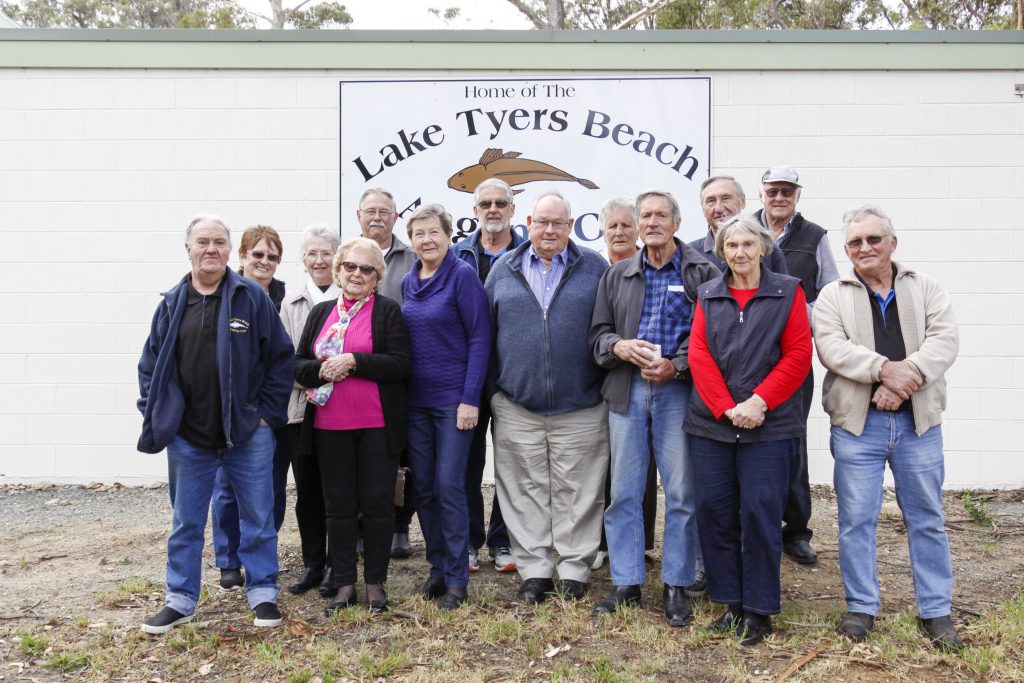
The East Gippsland Catchment Management Authority has been working with a number of its partners to control weeds along the Timbarra River.
Sections of the Timbarra, north west of Buchan, were recently burnt during a bushfire and large areas along the rivers edge are now seeing weeds such as willows and blackberries emerging.
Forest Fire Management Victoria and the Gunaikurnai Land and Waters Aboriginal Corporation (GLaWAC) NRM crew are working to remove weeds, particularly within the popular camping sites in the vicinity.
Further downstream, GLaWAC have also partnered with the Lake Tyers Beach Angling Club in controlling weeds to improve access to popular fishing spots.
These works aim to reduce the extent of weeds along the river, encouraging the regeneration of native vegetation, and to improve access for the local community and visitors alike to enjoy.
“We enjoy a close working relationship with all of our partners.” said the EGCMA CEO, Graeme Dear. “Projects like these are about people working together to improve the health of our waterways for all of the community to enjoy.”
The works are part of the Labor Government’s $222 million investment in improving the health of waterways and catchments, outlined in the Water for Victoria plan.
“The Gippsland Lakes, and particularly the rivers that feed them, are an important place for the Gunaikurnai, they’re the lifeline for our people when they’re travelling through country.” -Grattan Mullett Snr, GLaWAC

The Marlo Angling Club played host to local community members last Monday as Dan Stoessel from the Arthur Rylah Institute (ARI) presented his study – Snowy River, Then & Now.
The study, commissioned by the East Gippsland Catchment Management Authority and funded through the State Government’s environmental water program, sought to understand the changes to the river system over the last one hundred years.
The audience heard about what those changes mean for the health of the river and for the communities who rely on it. There was good discussion about the natural processes of the catchment, the impacts of climate change and the recruitment of native fish populations within the estuary.
“Undertaking these studies helps us gather information around the processes happening within the river system” said Bec Hemming, Programs Manager at the EGCMA. “ARI’s work helps us and the community understand the changing face of the catchment and provides an insight to better target future works by the EGCMA together with our partner agencies, the community and Landholders.”
Graeme Dear, CEO of the EGCMA said, “The Water Plan for Victoria seeks involvement from communities to improve our rivers. This forum is a great example of people and groups working together.”

The Gunaikurnai Land and Waters Aboriginal Corporation (GLaWAC) NRM crew have been busy at the mouth of the Tambo River recently, undertaking a fencing project at the popular site.
Working in partnership with the EGCMA and DELWP, the works will establish clear public access points to the well known fishing spot.
These works are part of a coordinated effort to improve the health of the Tambo River together with public access and amenity of five popular sites from Ensay downstream to the mouth of the river.
Daniel Miller, On Country General Manager at GLaWAC said “Caring for country is one of the core roles of GLaWAC. Our NRM team are proud to be working on country in partnership with DELWP and EGCMA to achieve this common goal”.
“The Water Plan for Victoria encourages greater involvement of traditional owners in the management of our rivers.” said the acting EGCMA CEO, Bec Hemming. “Working together with DELWP and GLaWAC provides opportunities to build and share skills and cultural knowledge.”
The project is funded by the Victorian State Government as part of $222 million committed to improving the health of waterways and catchments in Victoria.
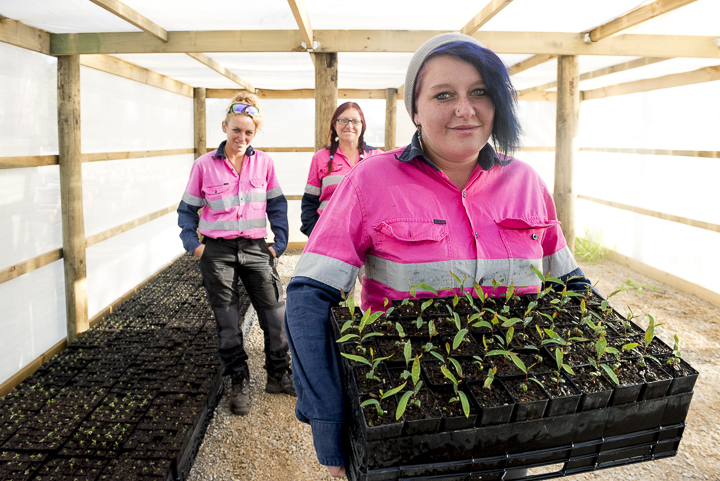
In a little nursery in Orbost, the Moogji Aboriginal Council have been growing big ideas.
The greenhouse was recently built to raise seedlings to plant along the banks of the Snowy as part of the Snowy River Rehabilitation project, administered by the East Gippsland Catchment Management Authority (EGCMA).
“We’re using seed collected from the same sites we’ll plant them back in to” explains Bianca McLaren from the Moogji works crew. “It’s quick and easy to collect the seed when we’re working by the riverbanks.”
The Moogji Aboriginal Council has a long working relationship with the EGCMA and other partner agencies. Graeme Dear, CEO EGCMA said, “involving aboriginal people to improve the health of our rivers is a key priority of the Water Plan for Victoria.”
Developing the greenhouse compliments the work they have been undertaking on the Snowy River Project and allows the organisation to continue to diversify.
This initiative has been established to involve young people, and the broader Aboriginal community, in growing plants as a pathway into upskilling and employment.
Latia LeSage has just started year 10 but spent her summer holidays doing work experience at the greenhouse helping to prepare and plant the seedlings. “I don’t have a green thumb at all but I enjoy the work.” she said. “I like to come and plant the seeds and it’s pretty cool to see them starting to grow”
“Growing plants is good for your soul” said Bianca. “If we can provide on the job experience knowing that it’s going to have a direct impact on the river we live near then everyone benefits”.
It’s been all about the Bass on the rivers of East Gippsland recently. The Australian Bass that is.
Last week saw the release of 10,000 Bass fingerlings into the Nicholson River at Deptford as part of a project undertaken by the East Gippsland Catchment Management Authority (EGCMA), the Victorian Environmental Water Holder, Bairnsdale RSL Angling Club and Victorian Fisheries Authority.
The release compliments the stocking of 454,000 Bass across 19 rivers and Lakes throughout Victoria, including 95,000 Bass into the Snowy River in recent weeks.
“We’ll always put our hand up to look after the health of our fishery.” said Russell White, President of the RSL Angling Club. “Bass have been a scarce fish to target in the past. We want to be able to help in some small way, and if down the track that means our kids can catch a fish then even better.”
Australian Bass rely on spring floods to trigger spawning and migration. The Nicholson Dam (below Deptford) creates a barrier that the Bass cannot cross. This project; and previous stocking of Bass in the river by Victorian Fisheries Authority, is keeping a good population of Bass in the river while we consider how to address the dam barrier impacts.
“Angling clubs are passionate about fishing and the environment and are actively involved in looking after fish stocks.” said Travis Dowling, CEO of the Victorian Fisheries Authority. “It’s great that we can work with the EGCMA and the angling club to look after our environment and our fishery as one.”
“The Water Plan for Victoria recognises the value of our rivers and waterways to our community’s wellbeing.” said Graeme Dear, CEO of EGCMA, “Partnering with others such as our local angling clubs and the Victorian Fisheries Authority is exactly what the Water Plan is about.”
This project compliments the State Government’s commitment to delivering its $46 million Target One Million plan for recreational fishing, which aims to grow participation to one million anglers by 2020.
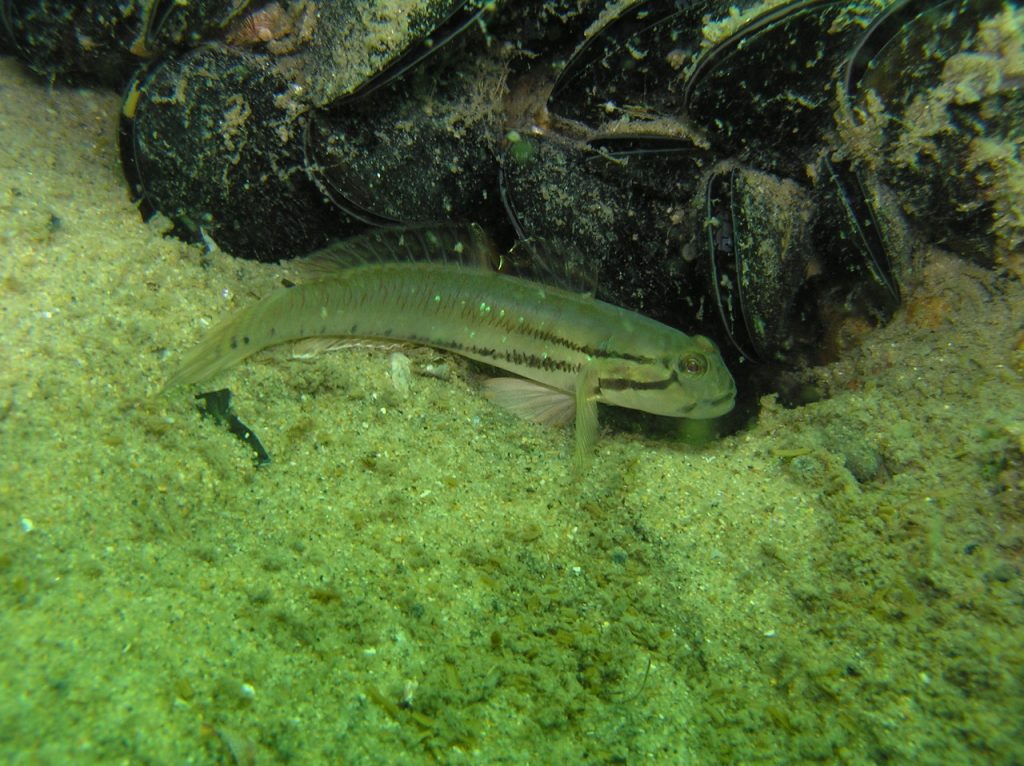
Friends of Beware Reef; a small volunteer group, are full swing into photographing the underwater world of the Gippsland Lakes after being one of the groups that secured funding in the Gippsland Lakes Community Grants in 2017.
The grant is for a twelve month project to establish a photo database of all marine fish and invertebrates found during dive surveys in the Gippsland Lakes. Surveys will focus on seagrass beds and rock structures and they will aim to identify any pest marine plants or animals.
Graeme Dear, CEO of the EGCMA said “it’s great to see such an enthusiastic group of people who love what they do and care about our Gippsland Lakes receiving this funding. The Water Plan for Victoria seeks increased participation from many groups and this Gippsland Lakes funding is part of the plan implementation.”
A small group of divers, Friends of Beware Reef have been diving and capturing vision of what is happening under the water’s surface for about 12 years. They have conducted an enormous amount of surveys and captured many stunning visions of the offshore marine life at Beware Reef sancturary near Cape Conran.
Not only are they passionate about diving and interested in what they find but they have also played a very important role in assisting DELWP and other departments gain further understanding of our marine environment. It was during one of their dives a couple of years ago that they discovered the Northern Pacific Seastar in the Gippsland Lakes, an invasive starfish that is an aggressive predator of native marine life.
Friends of Beware Reef pass on their knowledge and experiences to the community via the many talks they do to groups and organisations. With a wealth of knowledge and a superb collection of photos and videos, people have the opportunity to see what is below the surface without getting wet. Don Love, a Friends of Beware Reef member said “It’s about getting the word out and showing and educating people, we say hey the Barrier Reef looks pretty but there is some pretty cool stuff down here in our local area too.”
Funding for this and other projects has been provided by the Victorian State Government based on advice from the Gippsland Lakes Coordinating Committee.
“The Gippsland Lakes has probably got a great deal of biodiversity in it that we don’t really know about yet. Cameras have been dragged though the water but nothing beats the human eye when it comes to finding stuff. We love challenges and it’s about eyes on the bottom, someone just sniffing around and having the ability to observe things.” Don added.
